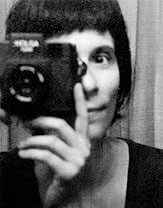Isa Leshko is a fine art photographer living in Philadelphia, PA. She has had solo exhibitions at the Corden|Potts Gallery, the Galveston Arts Center, the Griffin Museum of Photography, the Houston Center for Photography, the Silver Eye Center for Photography, and the Richard Levy Gallery. Her prints are in numerous private and public collections including the Boston Public Library, the Harry Ransom Center, Haverford College, and the Museum of Fine Arts, Houston. Her images have been published in print and/or online editions of The Atlantic, The Boston Globe, Frankfurter Allgemeine Sonntagszeitung, The Guardian, Harper’s Magazine, The New York Times, Photo District News and Süddeutsche Zeitung Magazin.
In 2012, Isa received both the Houston Center for Photography Fellowship and the Silver Eye Center for Photography Keystone Award for her Elderly Animals project. She was nominated for the 2011 Santa Fe Prize for Photography and was named a finalist for the 2011 New Orleans Photo Alliance Clarence John Laughlin Award.
Isa grew up in Carteret, NJ and received her BA from Haverford College, where she studied cognitive psychology and neurobiology. She spent the 1990s working for dot.com startups as a project manager and software engineer before she discovered her passion for photography. She has lived in Houston, TX, Salem, MA and Providence, RI.
Selected Books on

